
漢德百科全書 | 汉德百科全书

Assisi ist eine Stadt mit 28.379 Einwohnern (Stand 31. Dezember 2016) im mittelitalienischen Umbrien in der Nähe der Regionalhauptstadt Perugia. Sie ist Geburtsort des Hl. Franz von Assisi (auch Hl. Franziskus), des Gründers der Minderen Brüder (heute: Franziskaner oder Minoriten) und der Hl. Klara, der Gründerin des Klarissenordens.
Das mittelalterliche Stadtbild mit Stadtmauer und Festungsruine Rocca Maggiore ist noch gut erhalten und wurde im Jahr 2000 zum Weltkulturerbe der UNESCO ernannt.
阿西西 (意大利语:Assisi,天主教中文译作“亚西西”)是意大利翁布里亚大区佩鲁贾省的一个城市,位于苏巴修山的西侧。
阿西西是亚西西的方济各的诞生地,他于1208年在此创立方济各会;也是亚西西的圣嘉勒的出生地,她创立了贫穷修女会。19世纪的痛苦圣母加俾额尔也出生在这里。
2000年,亚西西的圣方济各圣殿和其他方济各会建筑被列为世界遗产。
1986年以来,世界宗教领导人会议不定期举行。
Assisi (Italian pronunciation: [asˈsiːzi], from the Latin: Asisium) is a town and comune of Italy in the Province of Perugia in the Umbria region, on the western flank of Monte Subasio.
It is generally regarded as the birthplace of the Latin poet Propertius, born around 50–45 BC. It is the birthplace of St. Francis, who founded the Franciscan religious order in the town in 1208, and St. Clare (Chiara d'Offreducci), the founder of the Poor Sisters, which later became the Order of Poor Clares after her death. The 19th-century Saint Gabriel of Our Lady of Sorrows was also born in Assisi.
Assise (en italien Assisi) est une ville italienne d'environ 28 100 habitants, située dans la province de Pérouse (Perugia) en Ombrie (Umbria).
Assise est surtout célèbre pour son apogée médiéval et pour être le lieu de naissance et de mort de Francesco Bernardone, plus connu sous le nom de François d'Assise, un des plus grands saints de l'Église catholique romaine. Pour son patrimoine exceptionnel, la ville est classée sur la liste du patrimoine mondial de l'Unesco.
Assise a été le siège de plusieurs rencontres interreligieuses, connues sous le nom de rencontres d'Assise, en 1986, 1993, 2002, et 2011.
Asís (en latín: Asisium, en italiano: Assisi) es una ciudad y comune en la provincia de Perugia región de Umbría, en Italia.
Según el censo de 2007, la municipalidad contaba con 26.000 habitantes en un término municipal de 187 km². La ciudad en sí cuenta con una población de cerca de 5.500 personas. Tras las elecciones de 2006, el ayuntamiento está regido por Claudio Ricci (PdL).
Sede episcopal relevante, es además la ciudad donde nacieron san Francisco de Asís, fundador en 1208 de la orden Franciscana o "franciscanos", y santa Clara de Asís (Chiara d’Offreducci), fundadora de la Orden de las hermanas pobres de Santa Clara o "clarisas".
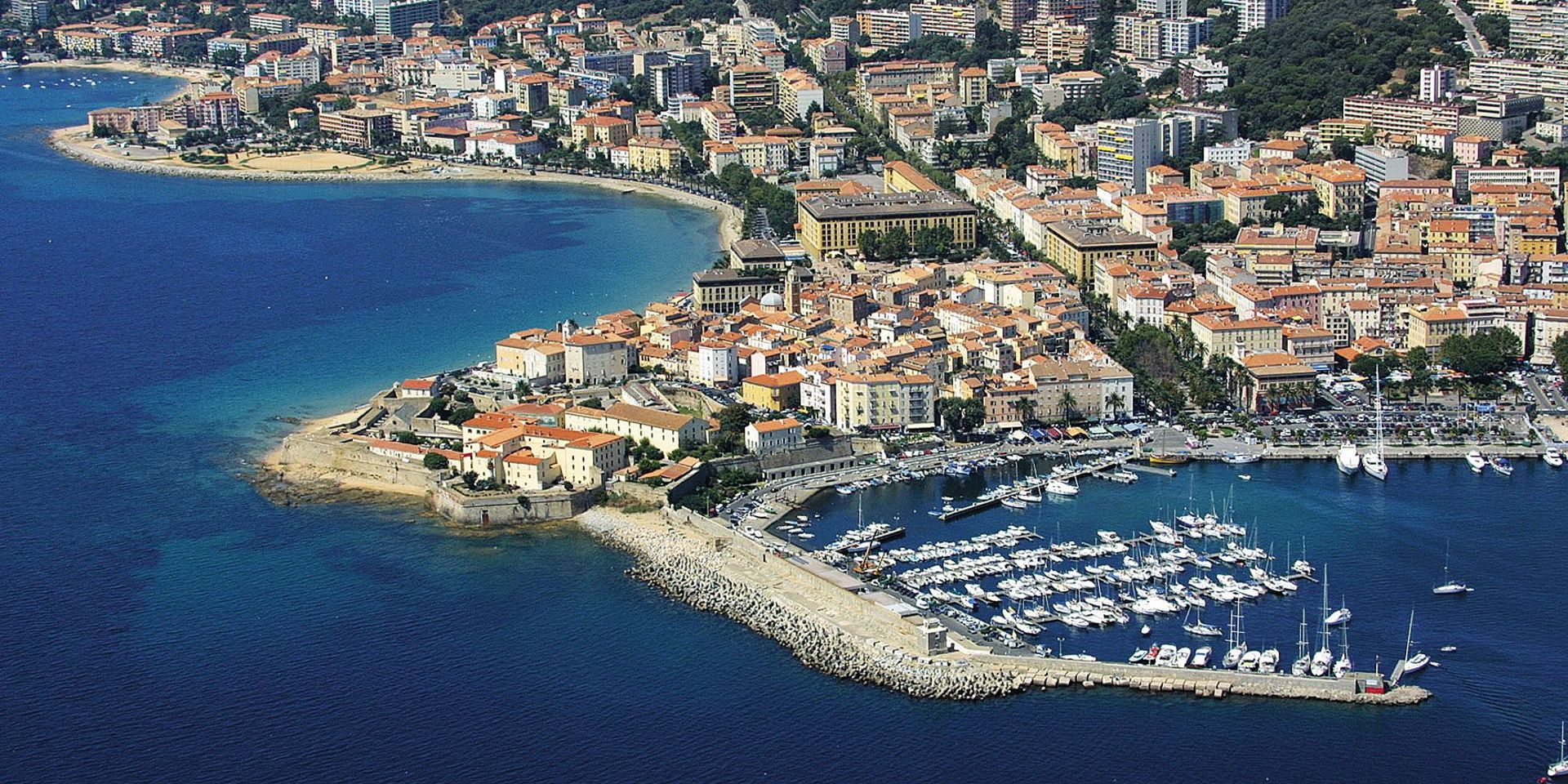
 Eurovision Song Contest,ESC
Eurovision Song Contest,ESC

 Financial
Financial
 ***Global Financial Center
***Global Financial Center

 History
History
 N 2000 - 2100 AD
N 2000 - 2100 AD

 History
History
 M 1500 - 2000 AD
M 1500 - 2000 AD

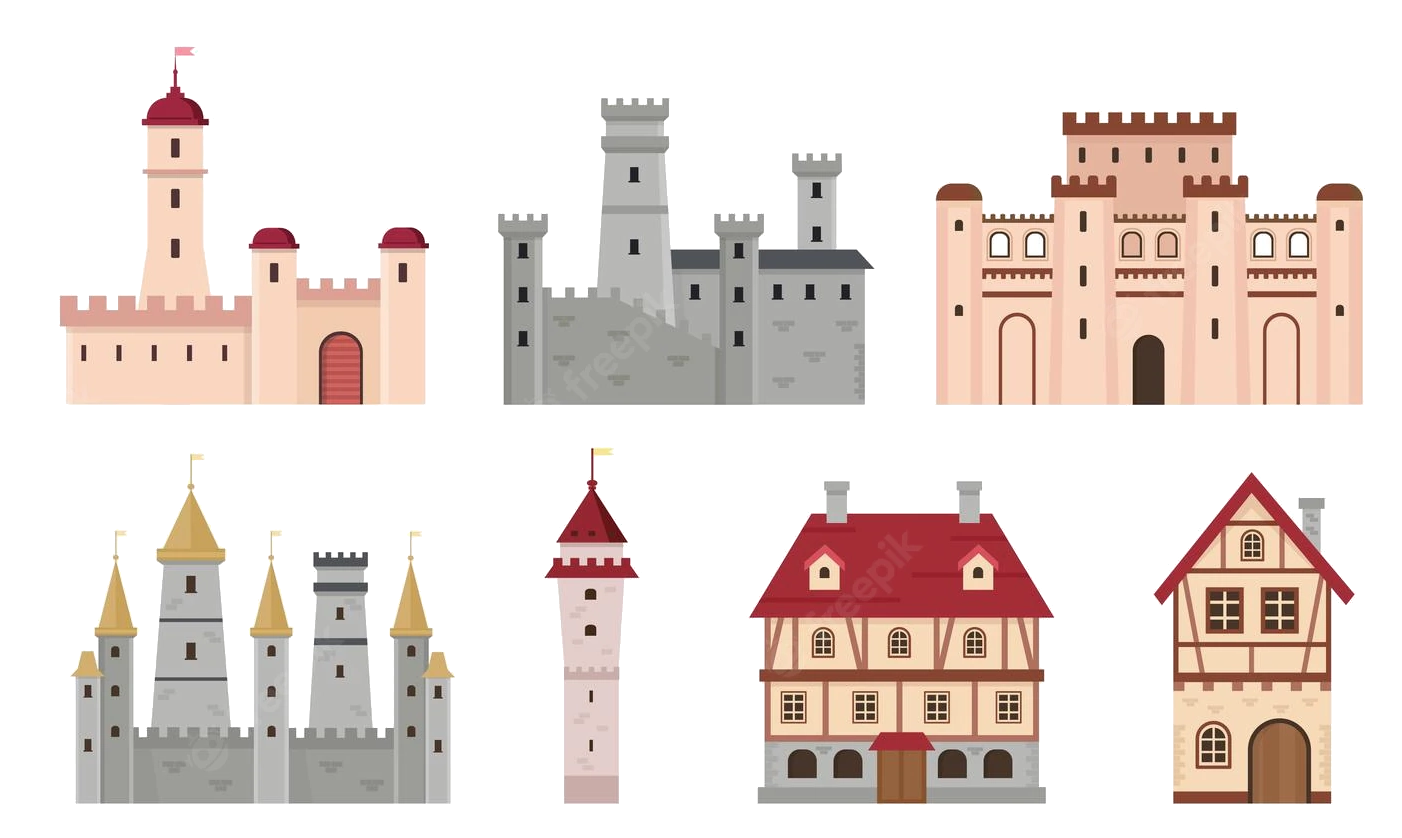 Medieval cities in Europe
Medieval cities in Europe
 Schottland
Schottland
 United Kingdom
United Kingdom

Edinburgh  [ˈɛdɪnb(ə)ɹə][2] (schottisch-gälisch Dùn Èideann [tuːn ˈeːtʃən]; dt. Edinburg; amtlich City of Edinburgh) ist seit dem 15. Jahrhundert die Hauptstadt von Schottland (bis dahin war es Perth). Seit 1999 ist Edinburgh außerdem Sitz des Schottischen Parlaments. Edinburgh ist mit etwa 493.000 Einwohnern nach Glasgow die zweitgrößte Stadt Schottlands und seit 1996 eine der 32 schottischen Council Areas. Die Stadt liegt an Schottlands Ostküste auf der Südseite des Firth of Forth gegenüber von Fife.
[ˈɛdɪnb(ə)ɹə][2] (schottisch-gälisch Dùn Èideann [tuːn ˈeːtʃən]; dt. Edinburg; amtlich City of Edinburgh) ist seit dem 15. Jahrhundert die Hauptstadt von Schottland (bis dahin war es Perth). Seit 1999 ist Edinburgh außerdem Sitz des Schottischen Parlaments. Edinburgh ist mit etwa 493.000 Einwohnern nach Glasgow die zweitgrößte Stadt Schottlands und seit 1996 eine der 32 schottischen Council Areas. Die Stadt liegt an Schottlands Ostküste auf der Südseite des Firth of Forth gegenüber von Fife.
爱丁堡(英语:Edinburgh, i/ˈɛdɪnbərə/[4]、苏格兰盖尔语:Dùn Èideann),是英国苏格兰首府,也是继格拉斯哥后苏格兰的第二大城市,位于苏格兰东海岸福斯湾南岸。截止到2013年,全市人口为487,500。[3]
i/ˈɛdɪnbərə/[4]、苏格兰盖尔语:Dùn Èideann),是英国苏格兰首府,也是继格拉斯哥后苏格兰的第二大城市,位于苏格兰东海岸福斯湾南岸。截止到2013年,全市人口为487,500。[3]
自15世纪以来爱丁堡就被当做苏格兰首府,但在1603年和1707年政治力量多次南移到伦敦。1999年苏格兰议会的自治权利才得以确立。苏格兰国家博物馆、苏格兰国家图书馆和苏格兰国家画廊等重要文化机构也位于爱丁堡。在经济上,现在的爱丁堡主要依靠金融业,是伦敦以外英国最大的金融中心。[5]
爱丁堡有着悠久的历史,许多历史建筑亦完好保存下来。爱丁堡城堡、荷里路德宫、圣吉尔斯大教堂等名胜都位于此地。爱丁堡的旧城和新城一起被联合国教科文组织列为世界遗产。[6]2004年爱丁堡成为世界第一座文学之城。[7]爱丁堡的教育也很发达,英国最古老的大学之一爱丁堡大学就坐落于此,为一所历史超过四百年的世界顶尖名校。[8]加上爱丁堡国际艺术节等文化活动,爱丁堡成为了英国仅次于伦敦的第二大旅游城市。
エディンバラ(英語: Edinburgh [ˈɛdɪnbərə] (![]() 音声ファイル)、スコットランド・ゲール語: Dùn Éideann [ˈt̪uːn ˈɛːtʲɛn̪ˠ])は、スコットランドの首都であり、ロージアン州の州都。日本語では「エジンバラ」とも表記される。
音声ファイル)、スコットランド・ゲール語: Dùn Éideann [ˈt̪uːn ˈɛːtʲɛn̪ˠ])は、スコットランドの首都であり、ロージアン州の州都。日本語では「エジンバラ」とも表記される。
Edinburgh (/ˈɛdɪnbərə/ ( listen);[6][7][8] Scottish Gaelic: Dùn Èideann [ˈt̪uːn ˈeːtʲən̪ˠ]; Scots: Edinburgh) is the capital city of Scotland and one of its 32 council areas. Historically part of the county of Midlothian (or Edinburghshire), it is located in Lothian on the Firth of Forth's southern shore.
listen);[6][7][8] Scottish Gaelic: Dùn Èideann [ˈt̪uːn ˈeːtʲən̪ˠ]; Scots: Edinburgh) is the capital city of Scotland and one of its 32 council areas. Historically part of the county of Midlothian (or Edinburghshire), it is located in Lothian on the Firth of Forth's southern shore.
Recognised as the capital of Scotland since at least the 15th century, Edinburgh is the seat of the Scottish Government, the Scottish Parliament and the supreme courts of Scotland. The city's Palace of Holyroodhouse is the official residence of the monarchy in Scotland. The city has long been a centre of education, particularly in the fields of medicine, Scots law, literature, the sciences and engineering. It is the second largest financial centre in the United Kingdom (after London)[9] and the city's historical and cultural attractions have made it the United Kingdom's second most popular tourist destination, attracting over one million overseas visitors each year.[10]
Edinburgh is Scotland's second most populous city and the seventh most populous in the United Kingdom. The official population estimates are 464,990 (2012) for the Locality of Edinburgh (Edinburgh pre 1975 regionalisation plus Currie and Balerno),[1] 513,210 (2017) for the City of Edinburgh,[2] and 1,339,380 (2014) for the city region.[2][3] Edinburgh lies at the heart of the Edinburgh and South East Scotland city region comprising East Lothian, Edinburgh, Fife, Midlothian, Scottish Borders and West Lothian.[11]
The city is the annual venue of the General Assembly of the Church of Scotland. It is home to national institutions such as the National Museum of Scotland, the National Library of Scotland and the Scottish National Gallery. The University of Edinburgh, founded in 1582 and now one of four in the city, was placed 23rd in the QS World University Rankings in 2018.[12] The city is also famous for the Edinburgh International Festival and the Fringe, the latter being the world's largest annual international arts festival. Historic sites in Edinburgh include Edinburgh Castle, the Palace of Holyroodhouse, the churches of St. Giles, Greyfriars and the Canongate, and the extensive Georgian New Town, built in the 18th/19th centuries. Edinburgh's Old Town and New Town together are listed as a UNESCO World Heritage site,[13] which has been managed by Edinburgh World Heritage since 1999.
Édimbourg (prononcé [e.dɛ̃.buʁ] ; Edinburgh [ˈɛ.dɪn.bərə] Écouter en anglais britannique, Dùn Èideann [ˈt̪uːnˈeːtʲən̪ˠ] en gaélique écossais, Embra, Edinburrie, Edinburra et Edimbra en scots) est une ville d'Écosse au Royaume-Uni. Elle est sa capitale depuis 1532, ainsi que le siège du Parlement écossais depuis le rétablissement de celui-ci en 1999. Sa population était de 457 830 habitants en 2005 (c’est la deuxième ville d’Écosse derrière Glasgow). Ses habitants s'appellent les Édimbourgeois. Depuis 1329, Édimbourg possède officiellement le statut de cité. Elle a aussi le statut de council area (depuis le 31 mars 1996) et de région de lieutenance, après avoir eu celui de district au sein de la région du Lothian (du 15 mai 1975 au 31 mars 1996) dont elle était le siège.
La ville est construite sur des collines volcaniques qui fournissent chacune un point de vue différent sur la ville. Elle est dominée par son château dont les fondations remontent au VIIe siècle mais c’est à partir du XIe siècle que fut construite cette résidence royale avant de devenir une forteresse redoutable au XVIe siècle. Édimbourg fut affranchie en 1329 et s’entoura de murailles au XVe siècle. Après la défaite de Flodden (1513) contre les Anglais, les bourgeois de la ville décidèrent de construire à titre préventif une seconde enceinte baptisée le mur de Flodden. Après l’unification des Parlements d’Écosse et d’Angleterre (1707), la ville perdit de son importance politique mais resta un important centre économique et culturel. En plus du Château, Édimbourg compte de nombreux lieux intéressants comme le Royal Botanic Garden, les cathédrales Saint-Gilles (presbytérienne), Sainte-Marie (épiscopalienne) et Sainte-Marie (catholique), la National Gallery, Charlotte Square, le Scott monument ou encore le National Museum of Scotland. Le palais de Holyrood (Holyrood Palace) est la résidence officielle de la reine lorsqu’elle séjourne dans la ville. Les districts de la vieille et de la nouvelle ville sont classés patrimoine mondial par l’UNESCO depuis 1995.
Édimbourg est célèbre pour son festival, le plus grand du monde, qui dure trois semaines en août et propose de nombreux spectacles de qualité dans toutes les disciplines.
La ville accueille l'une des plus prestigieuses universités d’Europe et du monde, l’université d’Édimbourg, pionnière dans l’informatique, la géologie, la chimie et la médecine. À Édimbourg se situe également la bibliothèque nationale d’Écosse (National Library of Scotland) qui est la plus importante bibliothèque d’Écosse (et l’une des plus grandes du Royaume-Uni).
Edimburgo (AFI: /edimˈburɡo/[3]; in inglese e scots Edinburgh, pron. [ˈɛdɪnbʌrə] oppure [ˈɛdɪnbrə], in gaelico scozzese Dùn Èideann) è una città del Regno Unito, capitale della Scozia dal 1437 e sede del suo nuovo parlamento dal 1999. È la seconda città della Scozia per popolazione dopo Glasgow e la settima del Regno Unito per popolazione. I dati ufficiali del 2014 stimano la popolazione in 464 990 abitanti per la città,[1] 492 680 per l'area dell'autorità locale[1] e 1 339 380 per l'area metropolitana[1] (Edinburgh è situata nel cuore della proposta "city region" di Edimburgo e Scozia sudorientale).
La città, situata sulla costa orientale della Scozia e sulla riva meridionale del Firth of Forth, a circa 70 km ad est di Glasgow, sorge su 7 colli. I punti più alti sono: Arthur's Seat, Castle Rock dove si trova il castello, Calton Hill, Corstorphine Hill, Braid Hills, Blackford Hill e Craiglockhard Hill, su di una serie di colline. Le parti storiche della città (Old e New Town), insieme al castello, nel 1995 sono state dichiarate patrimonio dell'umanità dall'UNESCO.
È una delle città più visitate della Gran Bretagna con circa 2 milioni di turisti l'anno[4] e a questo successo contribuisce anche il Festival di Edimburgo, che si tiene ogni anno ed è accompagnato da numerose manifestazioni collaterali.
Edimburgo ( /ˈɛdɪnb(ʌ)ɹə/ (?·i) en inglés y escocés: Edinburgh; en gaélico escocés: Dùn Èideann) es la capital y un concejo de Escocia (Reino Unido).23 Es la segunda ciudad más grande de Escocia tras Glasgow.
/ˈɛdɪnb(ʌ)ɹə/ (?·i) en inglés y escocés: Edinburgh; en gaélico escocés: Dùn Èideann) es la capital y un concejo de Escocia (Reino Unido).23 Es la segunda ciudad más grande de Escocia tras Glasgow.
Ubicada en la costa este de Escocia, a orillas del fiordo del río Forth y en la autoridad unitaria local de la Ciudad de Edimburgo, es la capital de Escocia desde 1437 y sede del gobierno escocés. Fue uno de los centros más importantes de educación y cultura durante la Ilustración gracias a la Universidad de Edimburgo. Sus distritos The Old Town (ciudad antigua) y The New Town (ciudad nueva) fueron designados Patrimonio de la Humanidad por la Unesco en 1995.4 Según el censo de 2011 tiene un población total de 459 366 habitantes.1
Edimburgo es famosa por su Festival Internacional, el festival de actuaciones en vivo más grande del mundo, y otros festivales desarrollados en verano de forma más o menos simultánea, la mayoría de los cuales se agrupan bajo la denominación Festival de Edimburgo. Durante el festival la población de la ciudad se duplica. Edimburgo es la segunda ciudad más visitada del Reino Unido, después de Londres, con aproximadamente 13 millones de turistas al año.
Эдинбу́рг (англ. и скотс. Edinburgh [ˈɛdɪnb(ʌ)rə], гэльск. Dùn Èideann [tuːn ˈeːtʃən]) — столица Шотландии (с 1437 года) и второй по величине её город. Административный центр округа Сити-оф-Эдинбург. Население Эдинбурга в 2016 году составляло 488,1 тыс. человек. Это седьмой по величине город Соединённого королевства. Расположен на восточном побережье Шотландии (территория Среднешотландской низменности), на южном берегу залива Ферт-оф-Форт.
Районы Эдинбурга — Старый город и Новый город — в 1995 году были занесены ЮНЕСКО в список объектов Всемирного наследия.


Edirne, früher Adrianopel (bulgarisch Одрин Odrin, neugriechisch Αδριανούπολις Adrianoúpolis), ist mit knapp 170.000 Einwohnern die westlichste Großstadt der Türkei. Sie liegt im bulgarisch-griechisch-türkischen Dreiländereck, in Ostthrakien, dem europäischen Teil der Türkei. Gleichzeitig ist sie auch Zentrum des zentralen Landkreises (Merkez). Die ehemalige Hauptstadt des Osmanischen Reiches ist heute das Verwaltungszentrum der gleichnamigen Provinz. Sie trug in ihrer Geschichte die Namen Odrysai (thrakisch), Orestia (altgriechisch) und Hadrianopolis (lateinisch, Stadt des Hadrian).
In Edirne schlossen die Sultane des Osmanischen Reiches dreimal einen Frieden, 1568 mit dem Heiligen Römischen Reich sowie 1713 und 1829 mit dem Russischen Kaiserreich.
埃迪尔内(土耳其语:Edirne;美国 /eɪˈdɪərnə, ɛˈ-/;土耳其语:[eˈdiɾne]),或称哈德良堡或阿德里安堡(拉丁语:Hadrianopolis,英语:Adrianople;/ˌeɪdriəˈnoʊpəl/),因罗马皇帝哈德良所建而得名。土耳其语埃迪尔内是希腊语阿德里安堡的音译,故两种称呼并不是两个不同的名字。该城是土耳其埃迪尔内省省会,位于邻近希腊和保加利亚的边境


宗教建筑公元742年,埃尔富特设为主教区,人们就把这一年作为建城之始。中世纪时,这里是宗教堡垒,先后修筑了80多座教堂和36座修道院,虽经几 百年风雨沧桑,今天仍保留下二三十座宗教建筑。1392年,埃尔富特办起一所大学(1816年解散,1992年重建)。宗教改革家马丁·路德曾在这里完成 学业,随后又在城北的奥古斯丁修道院度过6年光阴,这座修道院至今仍在。埃尔富特也是一些重大历史事件的目睹者,拿破仑曾在这里会见沙皇亚历山大一世,并 接见了大文豪歌德。1891年,社会民主党在这里召开代表大会,通过了《埃尔富特纳领》。 菘蓝花城古时,埃尔富特周围大量种植菘蓝,从中可以提取蓝色染料。通过经营这种植物,埃尔富特发展成一大贸易都市和德国有数的富裕大城。今日繁华的安格尔 大街 (Anger)就是当年的菘蓝贸易市场。从许多临街楼屋正面墙上那豪华的装饰可以看出这座古城当年的富足。然而,自从地理大发现以来,海外价格便宜的靛蓝 占领了市场,这里的菘蓝贸易日趋萧条,以致消失。18世纪起,人们开始转而发展花卉种植业,用科学方法培育花籽。埃尔富特遂成为园艺中心,向各国大量出口 鲜花和花籽。现在这里每年举行国际园艺展。场址在市南,占地广达100公顷。那里的花田常年色彩纷呈,灿烂如锦,附近还设有园艺博物馆。 中世纪教堂埃尔富特拥有极为众多的中世纪教堂、修道院和富裕市民的华丽房屋(尤其是鲁市周围),而且保留得十分完整,真可谓是“建筑艺术的露天博物馆”。 最有艺术价值的是教堂山上的双教堂。其中大教堂(Dom)具有罗曼式和哥特式的混合风格。殿堂格局宏伟,高大空廓,层顶装饰有多座大小不等的尖塔,一排排 长玻璃窗上全是五彩的玻璃画。墙上还有各种精美生动的人物雕像,西北大门壁上耶稣12门徒的雕像,最为出色。后室的高墙上有一座铸于1497年的铜钟,重 12吨,是世界最大的铸钟之一。它的钟声洪亮,在20公里外的魏玛城都清晰可闻。大教堂西北,一巷之隔,矗有另一座教堂,名叫圣塞维利堂。它的外部建筑并 不显眼,但却外拙内秀,内部结构十分精美。壁上的人物雕像,神态俨然。堂内还有15世纪的豪华石棺。 商贬桥格拉河在埃尔富特市内分为几股,市区河道蜿蜒,水市楼台,富有水乡情调。市政厅附近的河上架着一座古桥,叫商贩桥(krumerbrucke),建 于14 世纪。桥上两侧,筑有32座三四层商的楼屋,构成一条风格独特的桥街。桥街上是一家家出售工艺品和古玩的店铺。这样的桥街在意大利的佛罗伦萨有一座,而在 德国却只此一处。因此,桥街和双教堂一样,成为埃尔富特的象征。
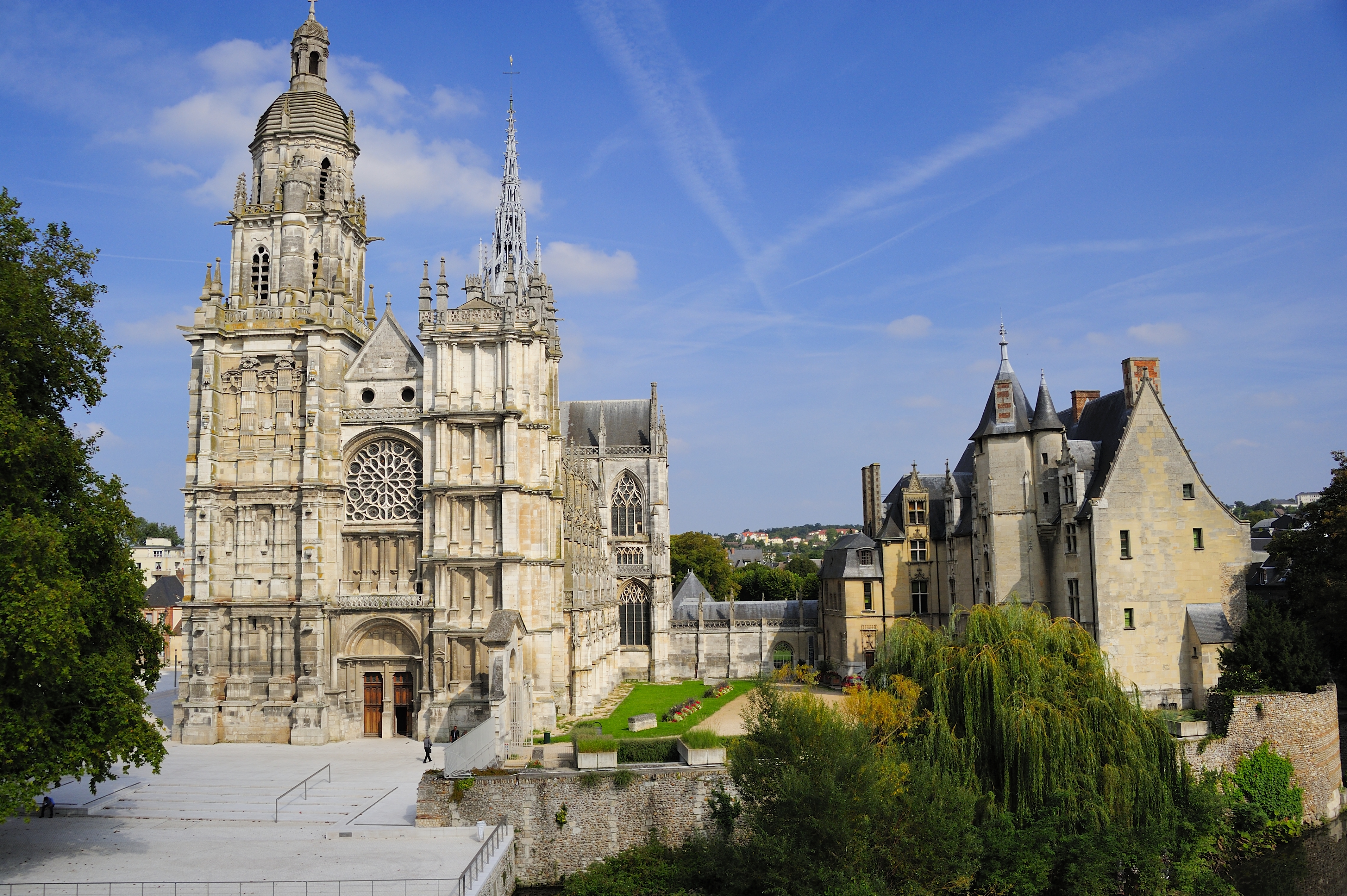
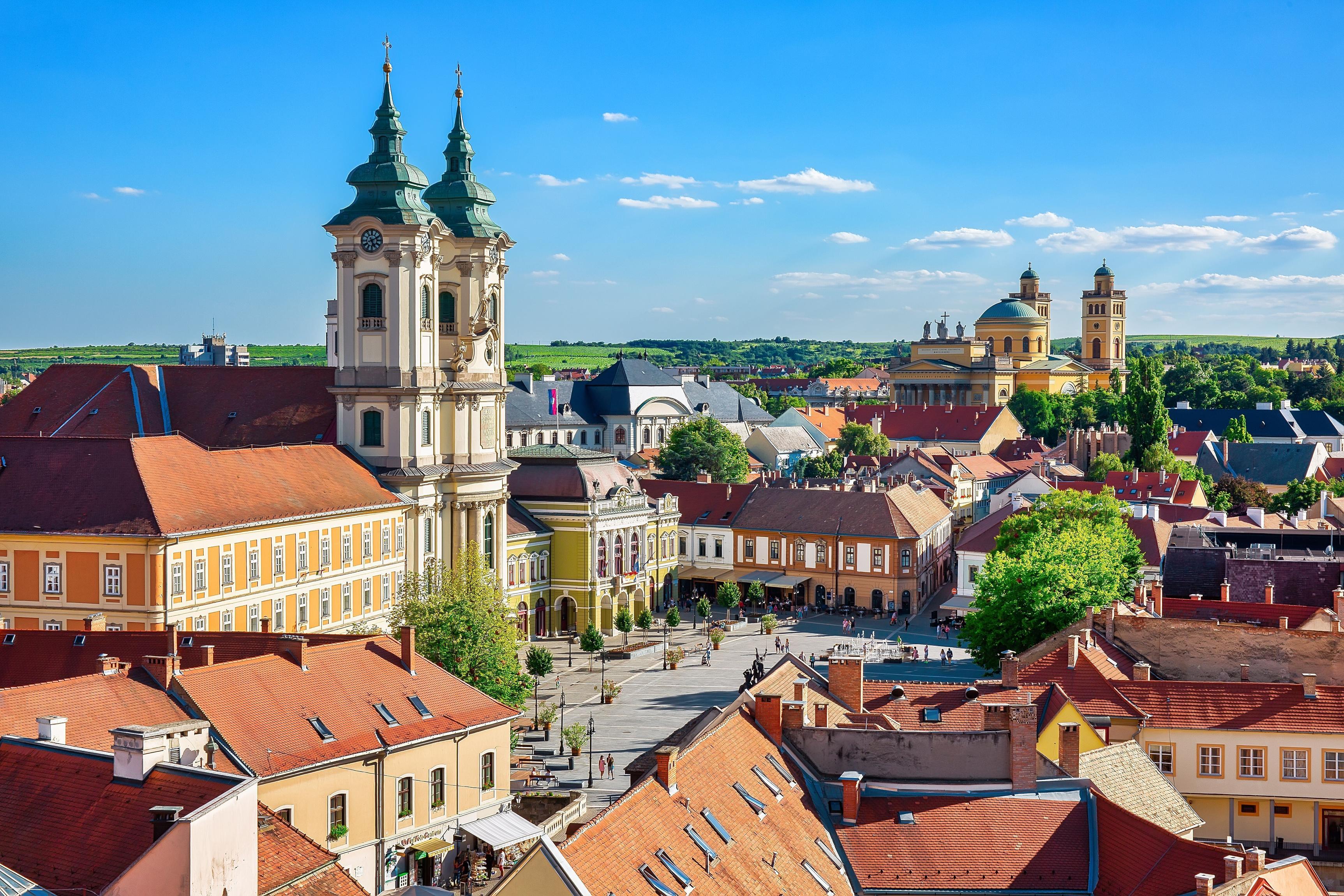

Exeter [ˈɛksɪtə] ist die Hauptstadt der Grafschaft Devon im Südwesten Englands und war früher die Hauptstadt von Cornwall. 2016 zählte die Stadt knapp unter 130.000 Einwohner.[1] Exeter liegt an einer Furt des Flusses Exe, einige Kilometer nördlich der Mündung in den Ärmelkanal. Der Wahlspruch der Stadt, Semper fidelis („für immer treu“),[2] wurde 1588 von Elisabeth I. vorgeschlagen.
埃克塞特(英语:Exeter,读音: /'eksɪtər/ 帮助·信息),英国英格兰西南区域德文郡郡治、城市。据2001年人口普查,埃克塞特的人口有111,076人。2010年则估计人口有119,600人[2]。埃克塞特的大教堂始建于12世纪初,并在16世纪宗教改革后是英国国教的教堂。埃克塞特的交通十分发达。埃克塞特是一个著名的旅游都市,然而这里的主要产业却不是旅游业。在罗马时期这里就有了都市。之后撒克逊人来到了这里。埃克塞特的都市规模仍在不断扩大。工业和服务业是这里的主要产业。埃克塞特市内有众多旅游景点及购物设施。市内有不少宗教建筑。埃克塞特的市政厅建于中世纪,号称是英格兰历史最长的市政厅,并且迄今都仍在使用。
/'eksɪtər/ 帮助·信息),英国英格兰西南区域德文郡郡治、城市。据2001年人口普查,埃克塞特的人口有111,076人。2010年则估计人口有119,600人[2]。埃克塞特的大教堂始建于12世纪初,并在16世纪宗教改革后是英国国教的教堂。埃克塞特的交通十分发达。埃克塞特是一个著名的旅游都市,然而这里的主要产业却不是旅游业。在罗马时期这里就有了都市。之后撒克逊人来到了这里。埃克塞特的都市规模仍在不断扩大。工业和服务业是这里的主要产业。埃克塞特市内有众多旅游景点及购物设施。市内有不少宗教建筑。埃克塞特的市政厅建于中世纪,号称是英格兰历史最长的市政厅,并且迄今都仍在使用。
 Germany
Germany

 International cities
International cities
 *European Capital of Culture
*European Capital of Culture

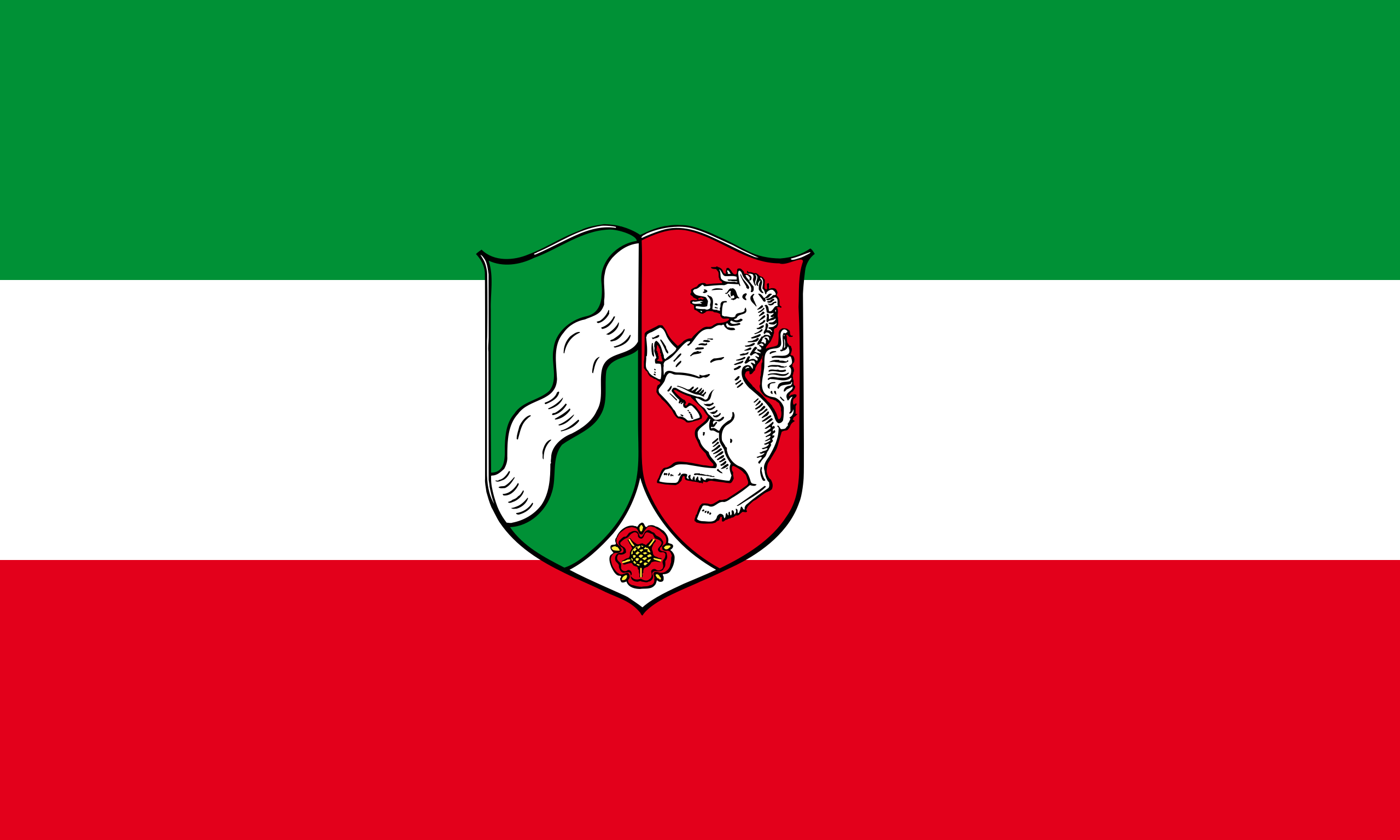 North Rhine-Westphalia
North Rhine-Westphalia
 Umwelthauptstadt Europas
Umwelthauptstadt Europas

Essen ist eine Großstadt im Zentrum des Ruhrgebiets und der Metropolregion Rhein-Ruhr. Sie ist nach Köln, Düsseldorf und Dortmund die viertgrößte Stadt des Landes Nordrhein-Westfalen und eines der Oberzentren. Mit 589.145 Einwohnern (31. Dezember 2016)[2] steht die kreisfreie Stadt im Regierungsbezirk Düsseldorf auf der Liste der Großstädte in Deutschland an neunter Stelle. Essen ist als bedeutender Industriestandort Sitz bekannter Großunternehmen und mit der 1972 gegründeten Universität-Gesamthochschule, die 2003 mit der Universität am Nachbarstandort in Duisburg zur Universität Duisburg-Essen fusionierte, auch Hochschulstandort. Im Jahre 1958 wurde die Stadt Sitz des neugegründeten Bistums Essen.
Die auf das 845 gegründete Frauenstift Essen zurückgehende Stadt an der Ruhr ist Mitglied im Landschaftsverband Rheinland und im Regionalverband Ruhr. Im Rahmen des Projekts RUHR.2010 – Kulturhauptstadt Europas war Essen im Jahr 2010 stellvertretend für das gesamte Ruhrgebiet Kulturhauptstadt Europas.
Neben dem Stift Essen war das von Liudger um 800 gegründete Kloster Werden ein Zentrum der spätantik-frühchristlichen Textüberlieferung. Im 14. Jahrhundert von Kaiser Karl IV. zur freien Reichsstadt erhoben, war Essen seit dem Spätmittelalter Waffenschmiede und stieg mit der Industrialisierung zu einem der wichtigsten Zentren der Montanindustrie in Deutschland (mit eigener Kuxbörse) auf. Nach massivem Rückgang der Schwerindustrie ab Mitte der 1960er Jahre hat Essen im Zuge des Strukturwandels einen starken Dienstleistungssektor entwickelt. Heute erinnern das Essener Münster und die älteste erhaltene vollplastische Marienfigur des christlichen Abendlandes (Goldene Madonna) an die mittelalterliche Geschichte der Stadt. Gleichzeitig zeugen Monumente der Industriekultur von ihrer schwerindustriellen Vergangenheit, besonders das UNESCO-Weltkulturerbe Zeche Zollverein. Das Stadtbild ist auch durch markante Hochhäuser geprägt.
Mit dem Museum Folkwang verfügt Essen über eine renommierte Sammlung moderner Gemälde und Fotografien. Das nach Plänen von Alvar Aalto erbaute Opernhaus, die Folkwang Universität der Künste, das Grillo-Theater oder das Deutsche Plakatmuseum sind angesehene Kunst- und Kultureinrichtungen.
Nachdem Essen 2010 Kulturhauptstadt Europas war, erhielt sie für das Jahr 2017 den Titel Grüne Hauptstadt Europas.
埃森(Essen)是德国北莱茵-威斯特法伦州里鲁尔区的一个非县辖城市,是杜塞尔多夫行政区的联邦州总中心之一。它是德国的一座大城市,大概有59万人口。该市还是莱茵兰风景区联盟和鲁尔区区域联盟成员。 埃森(Essen),公元897年时,称为Astnide。之后名称的演变过程是Astnidum→Astanidum→Asbidi→Asnid→Assinde→Asnida→Assindia→Essendia→Esnede→Essende→Essend→Essen。推测最初可能是“被火烧掉的林地”的意思。
埃森最著名的企业为蒂森克虏伯公司,其中一总部是设于埃森。而埃森第二大企业则为莱茵集团,是电力公司。 其他总部设于埃森的,还包括工程公司豪赫蒂夫、零售集团Aldi、化工公司伊诺力克,以及可口可乐。

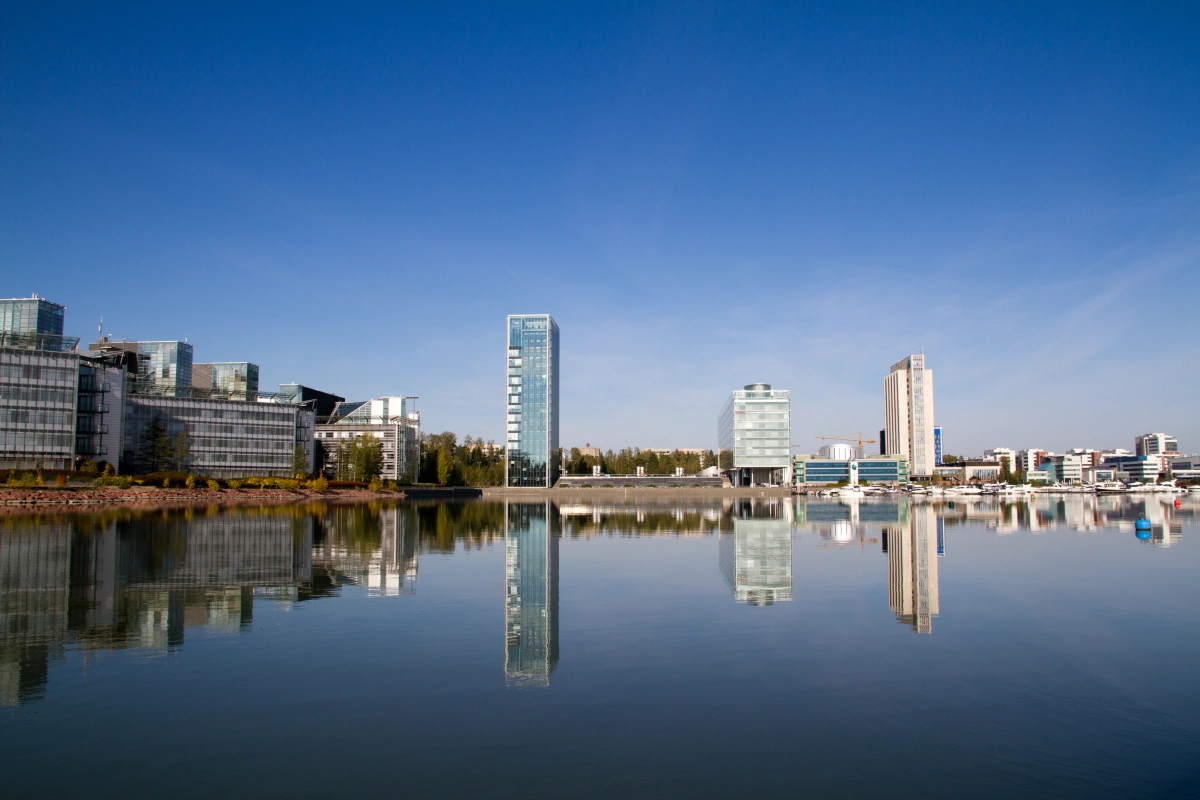
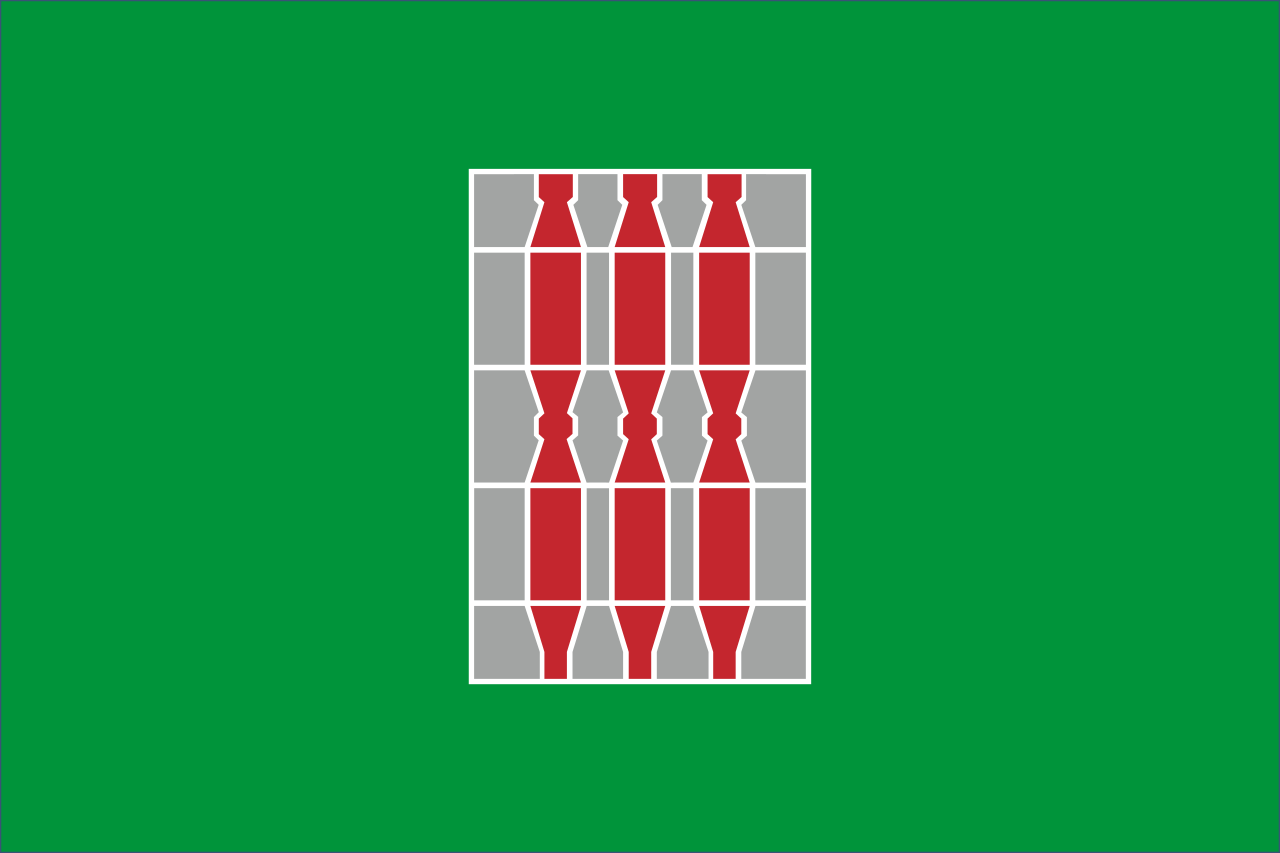 Umbria
Umbria
 World Heritage
World Heritage
 Corse
Corse
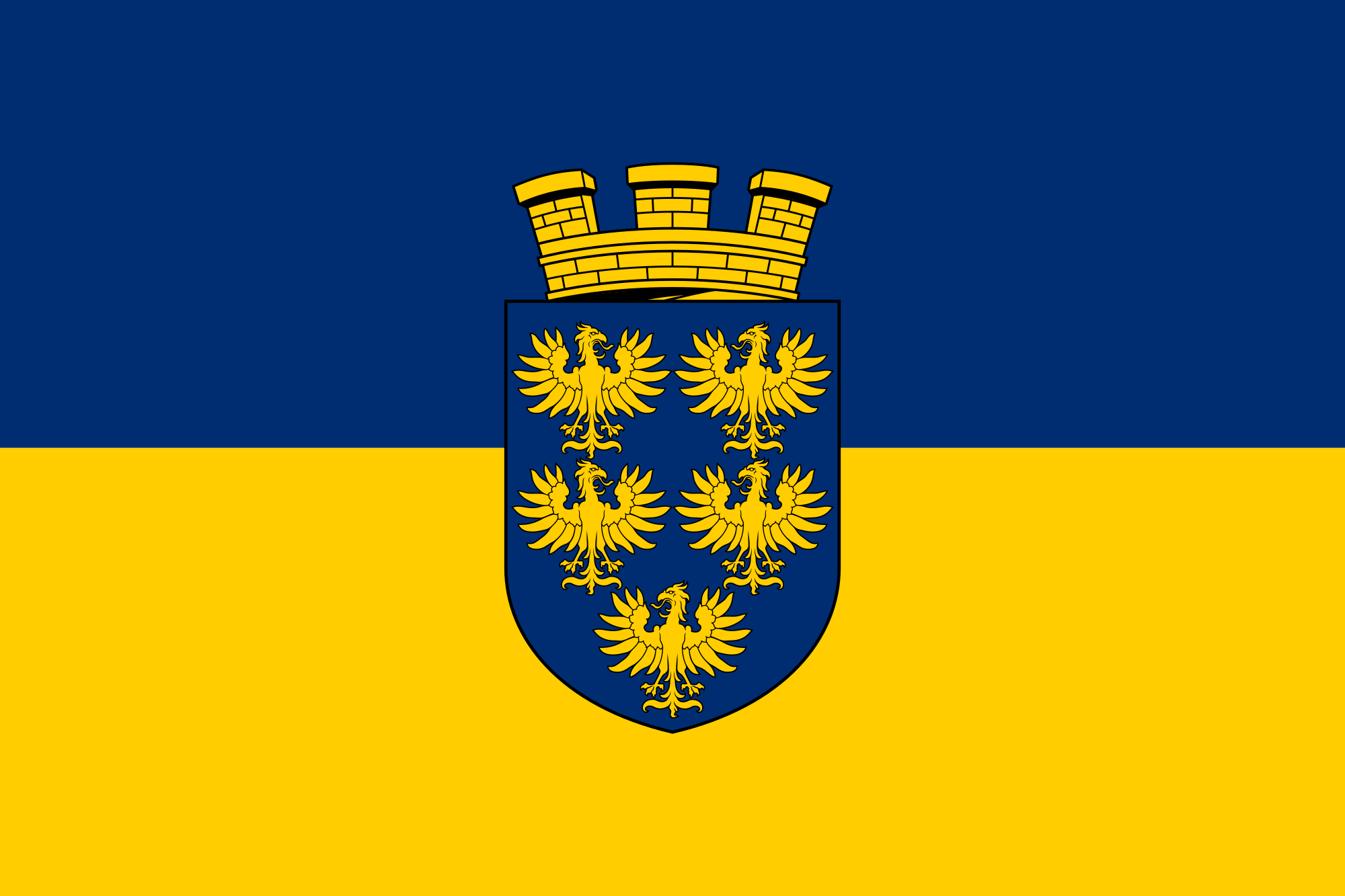 Lower Austria
Lower Austria
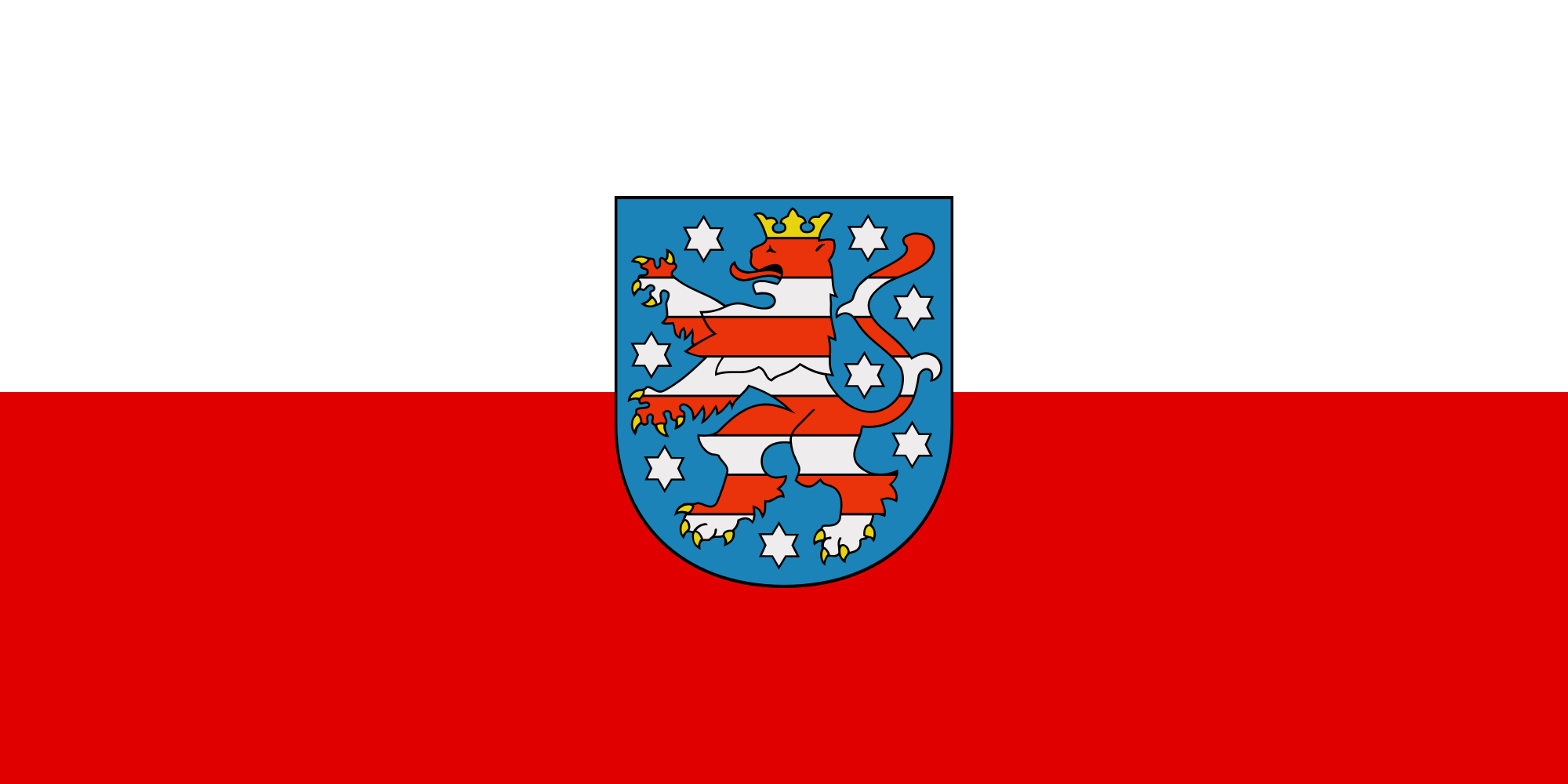 Thuringia
Thuringia
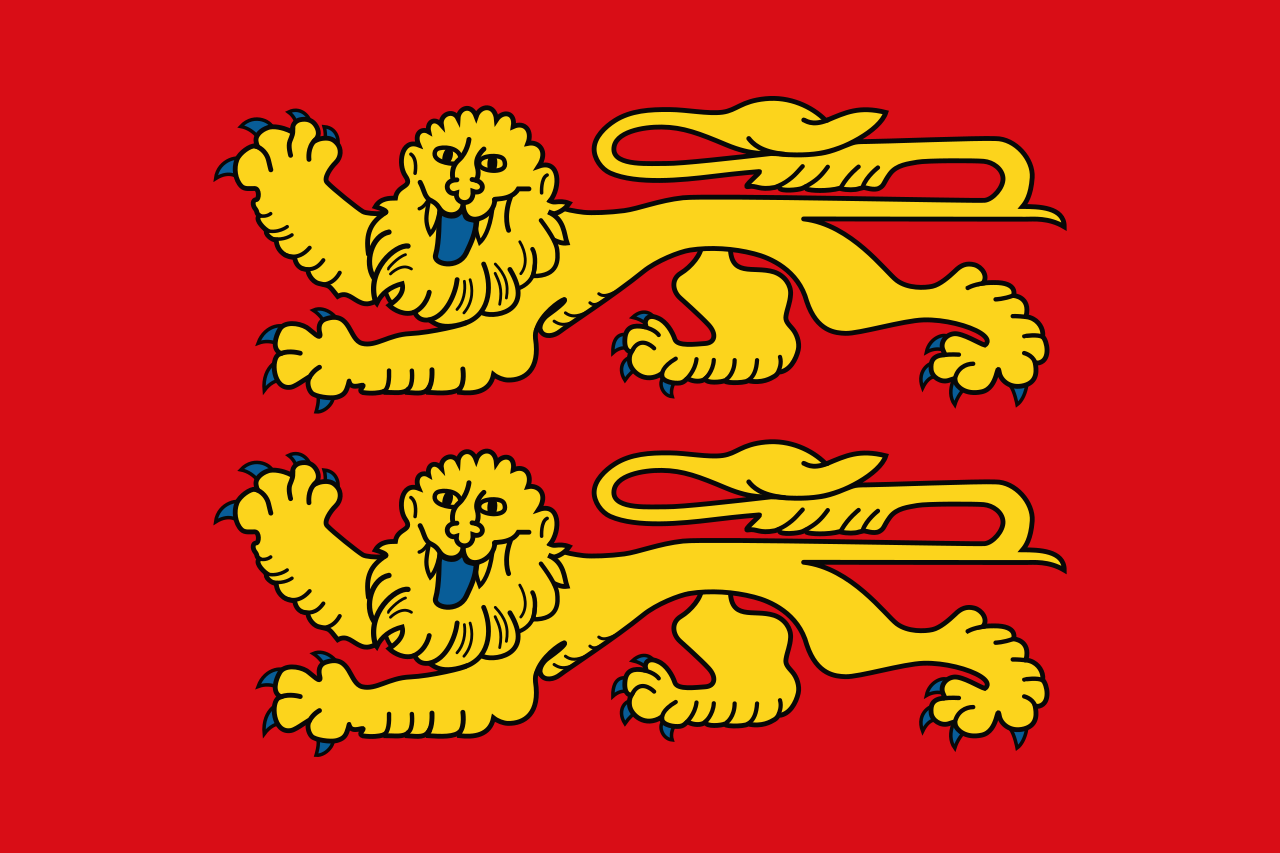 Normandie
Normandie
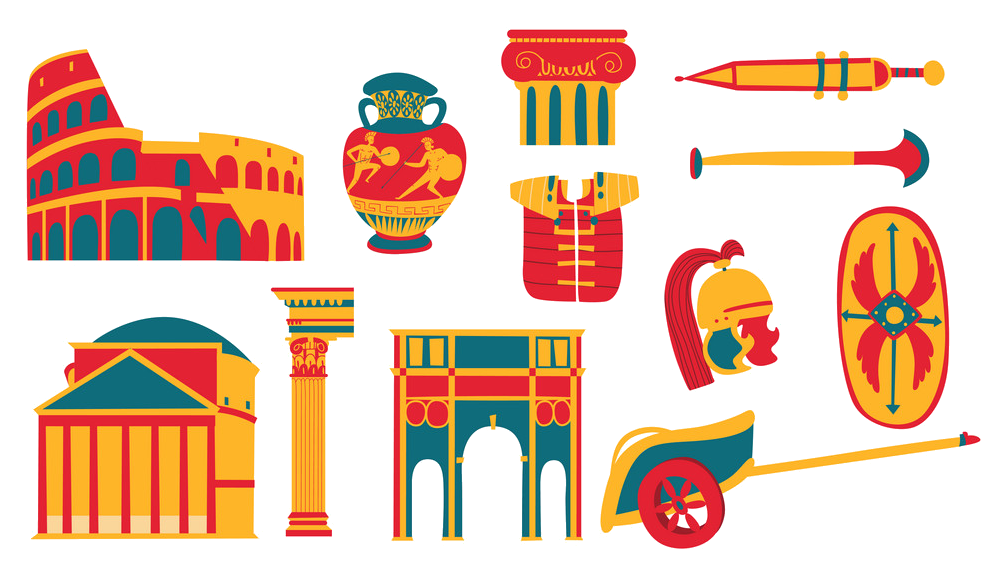 Cities founded by the Romans
Cities founded by the Romans
 Important port
Important port